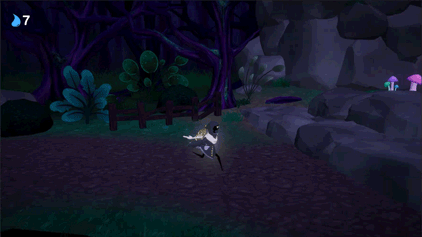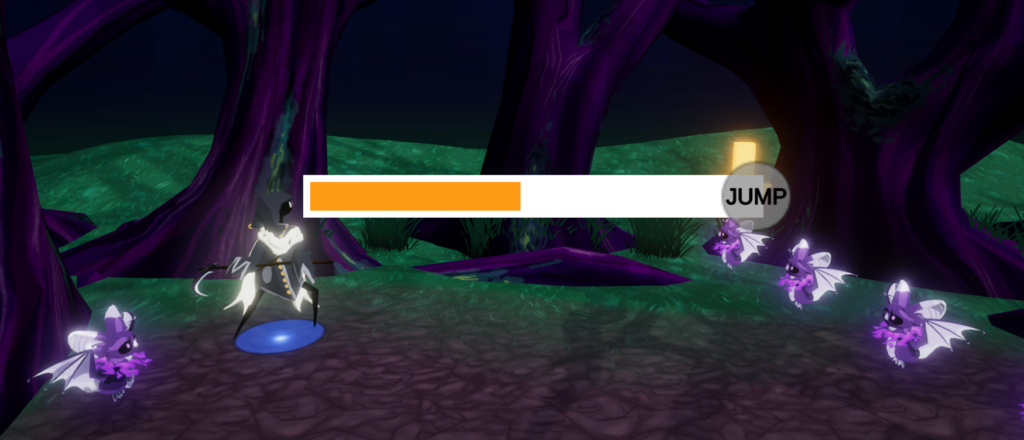Hey guys! It’s CJ again, here to tell you some more stuff about The Phantom Keeper.
A lot of what I’ve been focused on and talking about in these posts is the battle mechanics – but I haven’t talked much about the overworld movement yet, so I figured for this post I’d give an update on how that’s going!
A lot of the overworld gameplay is going to be heavily inspired by Paper Mario TTYD, and people who’ve played it will probably feel the similarities. Here’s a few things that you can do and expect in the overworld of The Phantom Keeper:
Classic 3D platformer movement!

For navigating the overworld, the basics are the same as many other 3D platforms – you can move around in all 4 directions, you can jump, and you can attack stuff with your scythe. When the game starts, that’ll be all of your movement options – and things will be focused more on exploring around and solving puzzles! We plan on having some more movement controls that you unlock throughout the game, but I’ll talk about those some other time.
The player’s movement is going to be a bit more physics-based, which means that you’ll be able to do some cool things like jump off of moving platforms and keep the momentum! Also, something cool we have right now is that attacking cancels your momentum – so you can stall yourself in the air as a way to save yourself if you mistime a jump!
Staged Perspective
For the majority of the game, the camera will be from a staged perspective (That’s probably not the actual technical term for it, but that’s what I call it). Staged perspective is when the camera follows the player, but stays at one angle – in our case, meaning that most of the movement will be left to right, but with a bit of added depth. You might be thinking ‘why?‘ or ‘Wouldn’t just a normal 2D or 3D camera be better?’ or maybe ‘What’s a camera‘, so here’s a few reasons why I like Forced perspective:
- You don’t have to control the camera at all! Makes it much more relaxing, and easier for less experienced gamers.
- It’s usually easier to figure out where to go next – when in doubt, going right usually works!
- Still preserves a bit of that exploration feel that 3D games give
- This is more for us, but it’s much easier and quicker to make levels that you only look at from one angle!
There may be a few places where we break this idea of a single camera angle, like in towns or particularly big areas – but we’ll still have the camera automatically controlled in those cases, so no need for camera controls!
I don’t know how to end blog posts! Bye! 👋







